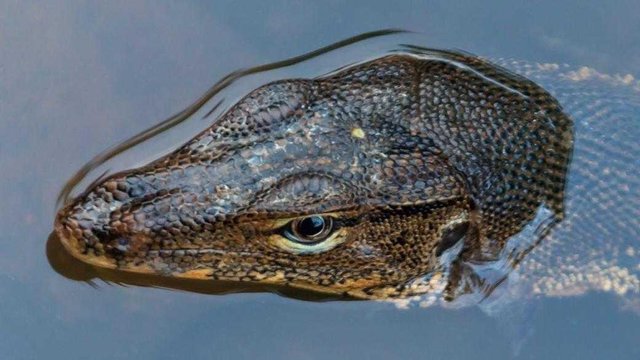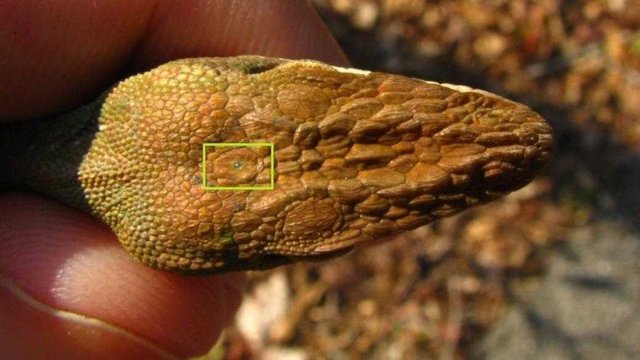Ever Seen a Three-Eyed Lizard? They're Everywhere.
On the off chance that you solicit us, the sudden appearance from a three-peered toward reptile on a climbing way or anyplace else is cause to drop everything and quickly advise authorities or something to that affect of radioactivity-based change.
Yet, put that telephone down. Most reptiles have a third eye found right smack at the highest point of their heads. What's more, as it were, so do people.

[Eye Eye, Captain]
In the event that you happen to have the chance to get very close with a living reptile's head, at that point we urge you to do as such.
In the event that you draw a nonexistent line interfacing one of its eye to the next, you'll presumably see that as the line crosses the reptile's temple, it converges a minor space right in the center. Simply don't look too hard at it — it's inconsiderate to gaze some individual in the eye.
The parietal eye is exceptionally regular among reptiles, and it can likewise be found in different reptiles, including ocean turtles and tuataras. You'll likewise discover it in numerous fish and creatures of land and water.
Be that as it may, what is it for, and for what reason don't people have one?
The parietal eye isn't exactly the same as the creatures' fundamental eyes, since it can't center or shape pictures.
However, it has a simple retina and focal point, alongside a bunch of light-delicate cells, that make it ideal for detecting minute changes in light and dim.
That proves to be useful from various perspectives, some of them very sudden. In the first place, the conspicuous advantages: in light of the parietal eye, reptiles can detect if there's something high above them (however they can't tell if that something is a ravenous bird of prey or an innocuous goldfinch).
Likewise, the eye gives the reptiles an entirely strong feeling of the sun's advance over the sky, which is critical on the off chance that you depend on the sun to keep your body warm.
One examination from the College of Ferrara in Italy really proposed that the parietal eyes play another, less instinctive part for the reptiles: route.
For the examination, the specialists prepared reptiles to swim from the focal point of a water labyrinth to achieve a stage close to the edge.
Despite the fact that the stage was covered up underneath the water, the reptiles could utilize their ability to read a compass to think that its inevitably. Next, they kept one gathering of reptiles in a room where the light darkened and lit up in a state of harmony with the sun, while another gathering lived in a place where the light would erupt and down at a capricious rate.
When they were set in a similar water labyrinth, the ones who had been familiar with ordinary light cycles could explore to the stage no issue. Be that as it may, the ones who were dazed about what time it really was had a substantially harder go of it.
That proposed to the specialists that the parietal eye adjusts with the reptile's inside clock so the little folks can tell what heading they're going by means of the area of the sun.

[Prehistoric Parietals]
The way that there are such a large number of parietal eyes in such huge numbers of various groups of vertebrates proposes that the organ must be entirely old.
Consider it along these lines: if a bundle of individuals in your family have red hair, they most likely all acquired it from some person additionally back on your family tree.
The same is valid for parietal eyes. Truth be told, on the off chance that you return sufficiently far on the human family tree, you'll find parietal eyes also — you simply need to return sufficiently far that we aren't vertebrates any longer.
A few scientists believe that the parietal eye is personally associated with relentlessness, and that well evolved creatures lost the need to keep such close watch on the development of the sun when we built up the capacity to keep ourselves warm.
Fascinating, regardless we have the remaining parts of the parietal eye bolted inside our brains. It's turned into the pineal organ, which causes us manage our rest cycles.
That implies it's still personally associated with how and when we choose to rest to ration vitality.
At last, we just couldn't in great inner voice end this article without specifying the latest unusual revelation in sudden eyes.
In 2018, German specialists experiencing some old fossils found the skull of an ancient screen reptile that was initially revealed in 1871.
Saniwa ensidens wandered the Earth 49 million years prior, and in those days you needed to think greater than three eyes to establish a connection. That is the reason Saniwa had four.
Despite the fact that the researchers still aren't sure why, they trust that this ancient goliath may have had a far and away superior route framework than its inevitable descendents.

This is simply great findings